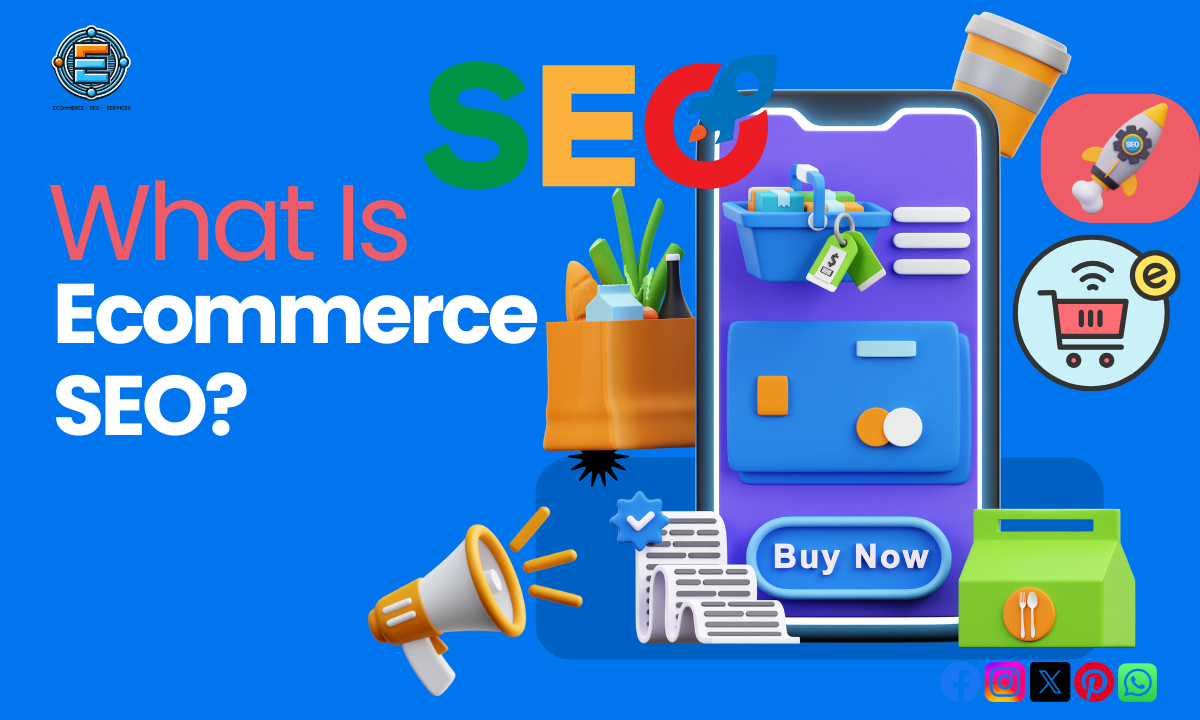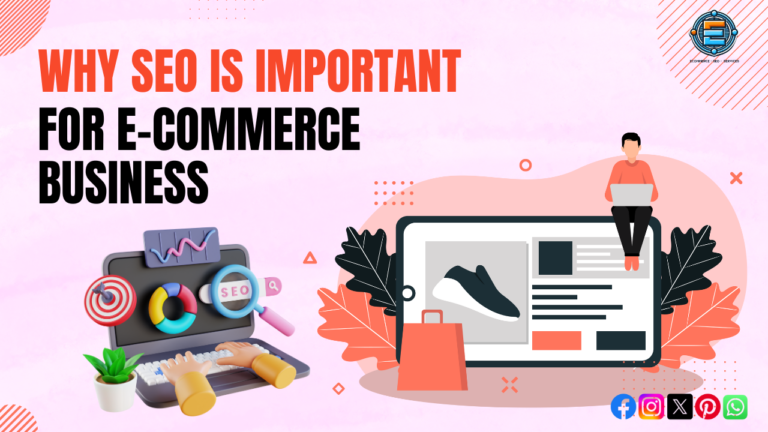In today’s digital marketplace, standing out can feel overwhelming. Many online stores struggle to attract traffic and convert visitors into customers.
Ecommerce SEO is the strategic approach that helps your online store improve its visibility in search engine results. By optimizing your website for search engines, you can reach more potential buyers and ultimately drive sales.
Understanding ecommerce SEO is vital for anyone running an online business. It involves a range of techniques designed to enhance your site’s performance in search results.
Without effective search engine optimization, your products may remain hidden, while competitors capture the attention of shoppers looking for what you sell.
Did you know that 93% of online experiences begin with a search engine? This fact highlights just how important it is to invest in SEO for your ecommerce site. Optimizing your content and ensuring that your product pages rank well can significantly impact your success in a crowded online space.
Understanding Ecommerce SEO Fundamentals
Ecommerce SEO is essential for your online store’s success. It involves specific strategies that improve your site’s visibility on search engine results pages (SERPs).
By focusing on both technical SEO and on-page SEO, you can attract more organic traffic and boost sales.
The Importance of SEO for Ecommerce Sites
SEO is crucial for ecommerce because it helps potential customers find your products. When your site ranks higher on SERPs, it increases visibility. This leads to more organic traffic, which is often more cost-effective than paid advertising.
A strong SEO strategy means using keywords relevant to your products. You should also consider your target audience. Understanding their search behavior can guide your content creation.
Moreover, effective SEO practices lead to better user experience. This can increase conversion rates, as happy visitors are more likely to purchase.
Key Concepts: Technical SEO and On-Page SEO
Technical SEO focuses on the backend of your site. It includes ensuring your website loads quickly and is mobile-friendly. These factors are vital for both user experience and search engine rankings.
On-page SEO is about optimizing the content that appears on your site. This means using keyword-rich product titles and enhancing product descriptions. You should also include meta tags that clearly describe your pages.
By combining both technical and on-page SEO, you create a solid foundation for your online store. This not only improves your visibility but also attracts more qualified leads, turning them into customers.
Developing an Ecommerce SEO Strategy
Creating a solid ecommerce SEO strategy that many eCommerce SEO Service providers do, involves several key elements. You need to focus on keyword research, site structure, optimizing product pages, and using content marketing effectively. Each of these areas plays a crucial role in improving your site’s visibility and driving sales.
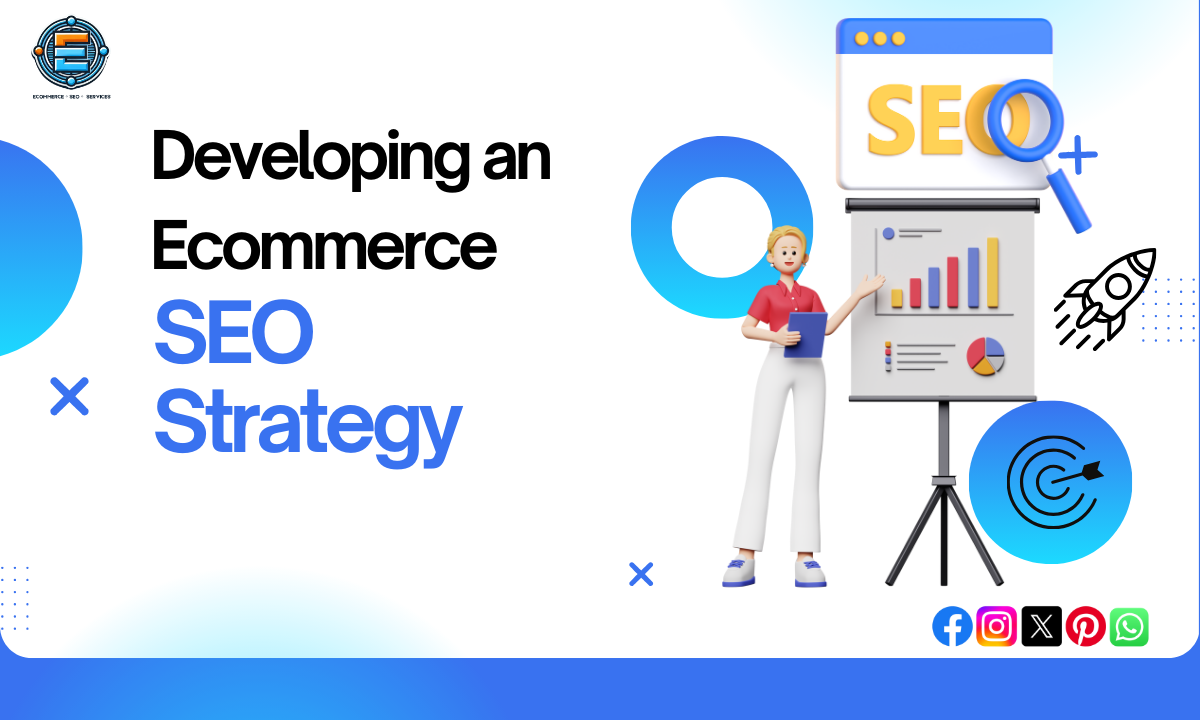
Keyword Research for Ecommerce
Effective keyword research is the foundation of your ecommerce SEO strategy.
Start by identifying relevant keywords that potential customers use to search for your products. Use tools like Google Search Console, SEMrush, or Ahrefs to find keywords with high search volume and low competition.
Look for long-tail keywords, which are more specific phrases that often have higher conversion rates. These keywords may reflect user intent better than broader terms.
Once you’ve gathered your list, analyze keyword difficulty to gauge how challenging it will be to rank for them. Prioritize keywords that align with your products and create content that addresses the search intent behind these queries.
Site Structure and Navigation
Your site’s architecture significantly impacts user experience and SEO. A well-organized structure makes it easier for search engines to crawl your site and for users to find what they’re looking for.
Use categories and subcategories for your products to create a clear hierarchy.
Ensure your navigation is intuitive. Keep it simple, with menus that lead to important product pages. Use breadcrumbs to help users understand where they are on your site. Implement sitemaps to help search engines index your pages more effectively.
A mobile-friendly design is also vital; responsive sites improve user experience and increase your chances of ranking higher in search engine results pages (SERPs).
Optimizing Product Pages
Product pages are crucial for converting visitors into buyers. Each page should have unique, descriptive content that includes your target keywords in key areas like title tags, meta descriptions, and headers.
Write compelling product descriptions that clearly explain the features and benefits of your products.
Don’t forget about alt text for images. This helps search engines understand what your images depict while improving accessibility.
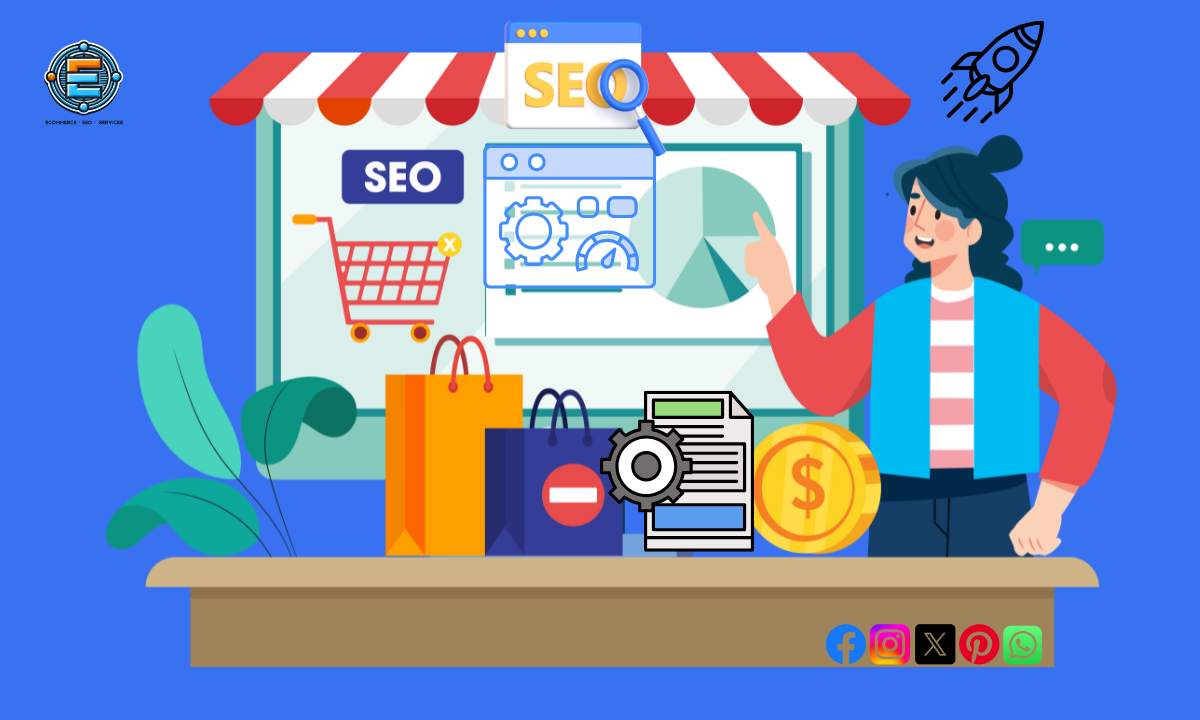
Use customer reviews to enrich your product pages. They not only provide fresh content but also build trust with potential buyers.
Ensure your pages load quickly and are easy to navigate to enhance the user experience.
Content Marketing and Blogging
Content marketing is an excellent way to drive traffic to your ecommerce site.
Start a blog that addresses topics relevant to your audience. This can include product guides, how-to articles, and industry news.
Effective blogging can improve your site’s authority and attract natural backlinks.
Incorporate SEO best practices into your content strategy. Use keywords strategically, but ensure the content reads naturally.
Focus on providing valuable, informative content that meets your audience’s needs. Engaging content can encourage visitors to spend more time on your site, which can positively impact your SEO performance.
Enhancing Visibility and User Experience
In eCommerce SEO, improving visibility and user experience is crucial for attracting customers and increasing sales. Focused strategies enhance search engine rankings and create a smoother shopping experience. Here are key areas to optimize.
On-Page SEO for Ecommerce
On-page SEO is vital for boosting your site’s visibility in search engine result pages (SERPs).
Begin with keyword optimization by using main and secondary keywords relevant to your products throughout your content. This includes product titles and descriptions.
Using descriptive URLs is another effective tactic, making it easier for search engines and customers to understand your products.
Keep your content engaging and informative to demonstrate E-E-A-T (Experience, Expertise, Authoritativeness, Trustworthiness). This fosters customer trust and interest.
Use canonical tags to prevent duplicate content issues and apply noindex tags where necessary to guide search engines on which pages to exclude.
Improving Mobile Responsiveness
A significant portion of online shopping occurs on mobile devices. Ensuring your eCommerce site is mobile responsive will enhance user experience (UX).
Quick loading speed is essential; aim for less than three seconds. This can be achieved by optimizing images and minimizing unnecessary scripts.
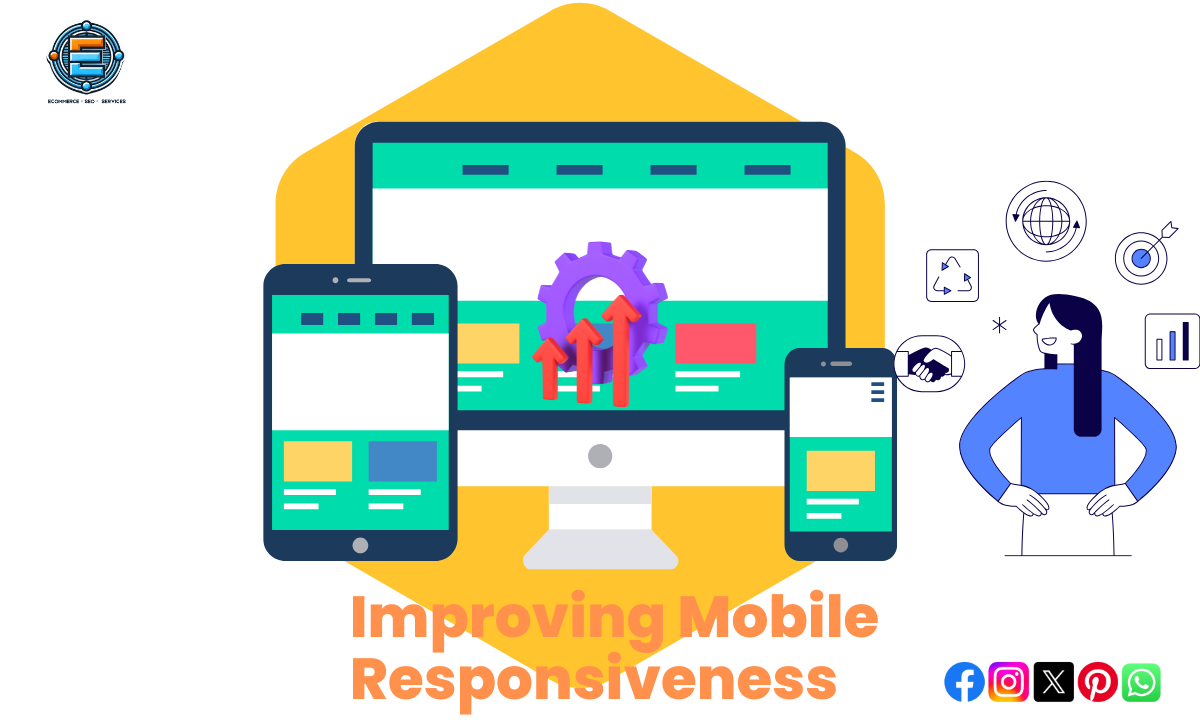
Test your site across various devices to ensure consistent functionality. Consider how users interact with your site on mobile—streamlined navigation and larger buttons improve engagement.
Implementing practices such as transactional keywords in search queries will help target users with commercial intent, leading to higher conversion rates.
Addressing Technical Issues
Technical SEO issues can hinder your website’s performance.
Regularly fix broken links to maintain site integrity and improve user navigation. Utilizing tools like Ubersuggest can help identify these issues efficiently.
Additionally, ensure your site meets standards for loading speed. Google’s algorithms favor faster sites, which means investing in performance optimization is essential.
Conduct competitor analysis to see how similar stores tackle their technical SEO challenges. This information can guide you in making improvements that elevate your site’s overall performance and enhance user experience.
Tracking Success and Maintaining Rankings
To effectively track your eCommerce SEO success, you must utilize the right tools and continuously analyze keywords and market trends. This process helps you make informed decisions and adapt your strategies for better visibility and performance.
Leveraging SEO Tools and Analytics
Using tools like Google Keyword Planner is essential for tracking relevant keywords. These tools help identify which keywords drive traffic to your site.
Look for informational and LSI keywords that match your products.
Incorporating meta tags on your eCommerce pages enhances search visibility.
Regularly checking website traffic through analytics platforms reveals user behavior. Monitor your competitors using specialized SEO tools to see what strategies are working for them.
This research can guide your improvements and boost your site’s trustworthiness.
Continuous Keyword and Market Trends Analysis

Staying ahead in eCommerce requires ongoing keyword analysis.
Use a keyword overview tool to track performance, focusing on trends that may indicate market shifts.
Evaluate keywords that bring in the most traffic and identify gaps in your strategy.
Monitor both short-tail and long-tail keywords. This broad approach can give insights into how user searches evolve.
Additionally, keep an eye on competition to adapt quickly to market changes and maintain your rankings.
Ensure your site has a responsive design that appeals to users and search engines, enhancing the overall user experience.
FAQs
Ecommerce SEO involves specific strategies and practices tailored for online stores. Here are some common questions people have about this important topic.
How does SEO for ecommerce product pages differ from general SEO?
SEO for ecommerce product pages focuses on optimizing individual product listings. This includes using unique product descriptions, optimizing images, and incorporating specific keywords that potential buyers search for. General SEO may focus more broadly on entire websites or blogs.
What are essential components of an ecommerce SEO strategy?
An effective ecommerce SEO strategy includes several key components. You need to focus on keyword research, product page optimization, site speed improvement, mobile optimization, and building quality backlinks. Each of these factors contributes to better visibility in search engine results.
What are the key differences between traditional SEO and Ecommerce SEO?
Traditional SEO often prioritizes content-driven sites, such as blogs, while Ecommerce SEO targets online storefronts. Ecommerce SEO needs to emphasize product-specific factors like pricing, shipping information, and user reviews. This tailored approach helps attract more targeted traffic that is ready to make purchases.
Is investing in SEO for an ecommerce website worth it?
Yes, investing in SEO for your ecommerce site is often worthwhile. A well-optimized ecommerce website can lead to higher rankings on search engines, increased traffic, and ultimately more sales. It is a long-term strategy that can provide ongoing returns.
How can you effectively implement SEO for Ecommerce products?
To effectively implement SEO for your products, start with thorough keyword research. Use these keywords in product titles, descriptions, and meta tags.
Also, improve the loading speed of your pages and ensure your site is mobile-friendly to enhance user experience.
What are the four main types of SEO in the context of ecommerce?
The four main types of SEO for ecommerce include on-page SEO, off-page SEO, technical SEO, and local SEO.
On-page SEO focuses on optimizing content, while off-page refers to building authority and backlinks. Meanwhile, technical SEO deals with site structure and speed, and local SEO helps target customers in specific geographical areas.

